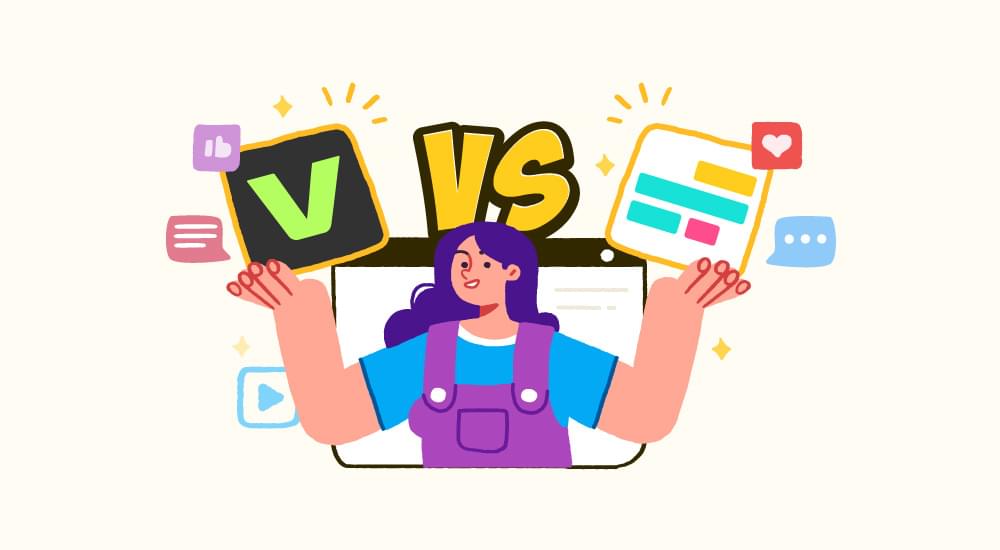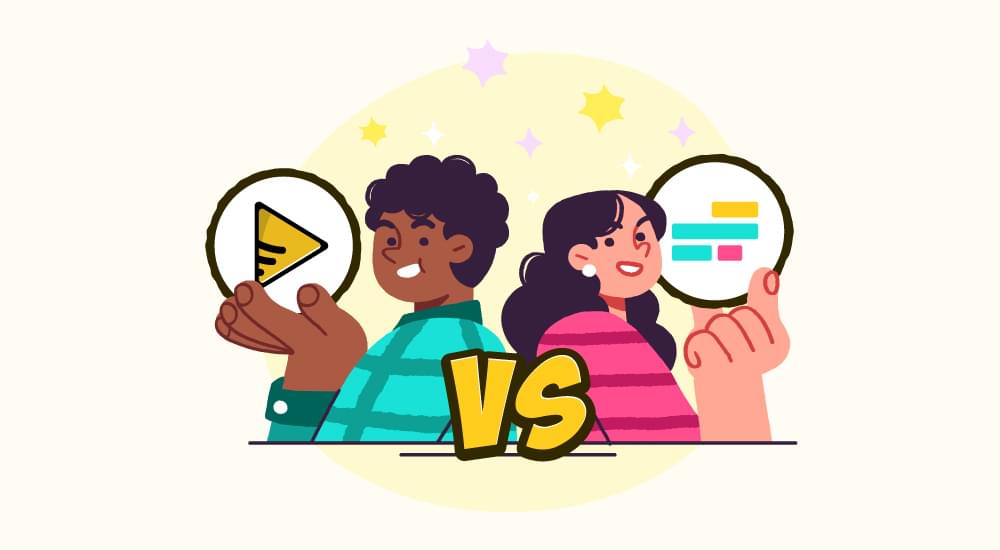
video tutorials for social media
Custom Subtitles for Personalized User Experiences
You might know that the demand for personalized experiences is growing more and more in every online industry. Personalized subtitles play an integral role in ensuring that users, regardless of their diverse needs, can fully immerse themselves in the content. It’s not just about words on the screen it’s about creating an inclusive and engaging environment for every viewer.
Personalized subtitling and viewer-specific captions are a lot different than simple transcription. They involve tailoring subtitles to cater to audience’s preferences, from font styles to language choices. They revolve around recognizing the diversity of your audience and offering a viewing experience that feels specially created for each user. Similarly, UX-driven subtitling ensures a flawless and enjoyable viewing experience, focusing on user-centric design principles. They add another layer of interactivity that engages users in a way that transcends traditional subtitles, making the content engaging.
Let’s see what personalized subtitling technique has in store for you and your business.
Key Takeaways
- Subtitling should be an interactive experience for the users to adjust styles and engage with clickable text.
- Personalized subtitles should easily integrate with popular video platforms to provide a consistent viewing experience across different channels.
- The emerging technologies like AI, AR, and VR provide insights into the future of adaptive subtitling styles and enhanced interactivity.
- Personalization extends beyond language, considering every person’s viewing habits and preferences, promising a more nuanced and sophisticated subtitling experience.
What Can Personalized Subtitling Do For You?

Minor details can contribute to a more inclusive and engaging viewing experience. What if subtitles weren’t just a translation but customized perfectly to your language preferences? How would your viewing experience change if the captions were not just what’s said but how you prefer it displayed? The importance of personalized subtitles lies in these subtle adjustments that cater to your audience’s needs, making the content deeply resonant.
Let’s see how these viewer-specific captions hold the potential to enhance accessibility, bridge language barriers, and create a viewing experience that feels distinctly yours. It’s not just about what you see on the screen it’s about how it speaks directly to you.
Enhancing Content Accessibility and Reach
Personalized subtitling ensures that your content reaches a diverse audience. By customizing subtitles to individual needs, you extend the reach of your message, making it inclusive for everyone. Whether it’s a different language or accommodating those with hearing impairments, personalized subtitles open up your content to a wider and more varied audience.
Beyond the conventional scope of subtitles, personalized subtitling becomes a powerful tool for inclusivity. For individuals with hearing impairments or those facing language barriers, personalized subtitles provide a gateway to understanding and enjoying your content. It transforms your videos into an accessible and welcoming space for all.
Improving User Engagement and Viewing Experience
The personalized touch in subtitles elevates the viewing experience, transforming it into something more than a passive activity. Users are not just reading text they are engaging with content tailored to their preferences. This interactive element adds depth to the viewing process, creating an immersive environment that captivates and holds attention.
Viewer-specific captions and personalized elements in subtitles play a crucial role in holding your audience’s attention. When viewers feel that the captions and subtitles are aligned to their needs, the watch-time and engagement metrics increase. This personalized approach enhances viewer retention, a key metric for the success of any content in the competitive landscape.
As we unravel the layers of the importance of personalized subtitles, it becomes evident that this nuanced approach goes beyond mere accessibility it shapes a viewing experience that is inclusive, engaging and memorable for every person.
Viewer-Specific Captions
Have you ever wished that the captions on your favorite videos were more than just plain words? Viewer-specific captions have emerged as a transformative technology in personalized subtitling, bringing a whole new dimension to your viewing experience.
These viewer-specific captions are not just static, but they adapt to your preferences, making the content uniquely yours. They surpass the conventional subtitles, offering customization options that refine how you interact and absorb video content.
Customization Options
Viewer-specific captions enhance personalization and allow content creators to offer a range of options, from font styles to text animations. The aim is to provide you with the tools to design the visual aspect of subtitles according to your preferences.
No two viewers are the same, and viewer-specific captions acknowledge this diversity. You have the freedom to make subtle adjustments that matter to you. Whether it’s increasing the font size for better readability, choosing a color that suits your taste, or selecting a style that resonates with you – the power to customize is all yours!
Language Preferences
Viewer-specific captions break language and cultural barriers by adapting to your preferred languages. No longer confined to a single language, you can enjoy content in a way that feels most comfortable and authentic to you. A survey says that this has gained 15% increase in engagement among those whose primary language is different. This adaptability transforms subtitles into a bridge that connects you easily with content from around the world.
In a world where regional and cultural diversity is celebrated, viewer-specific captions contribute to global accessibility. Nowadays, AI subtitle generators support multiple languages to ensure that the content is not confined by linguistic boundaries, making it accessible to a broader and more diverse audience.
What Are UX-Driven Subtitling?
UX-driven subtitles, or user experience-driven subtitles, represent a refined and new approach to presenting textual content in videos. Unlike traditional static subtitles, UX-driven subtitles prioritize enhancing the overall user experience by adding interactive elements and optimizing design for diverse devices.
The key features of UX-driven subtitling are:
- Incorporating Interactive Elements: UX-driven subtitles introduce interactive elements, allowing users to engage with the content beyond passive viewing. These elements could include clickable text that provides additional information, related links, or even interactive features like polls or quizzes.
- Enhancing User Engagement: The primary goal of UX-driven subtitles is to enhance user engagement. By adding clickable elements within subtitles, viewers become active participants in the viewing experience. This interactivity adds depth and dynamism, making the content more engaging and deep.
- Optimizing for Various Screen Sizes: Recognizing the diversity of devices used for content consumption, UX-driven subtitles are optimized for various screen sizes. Whether on a large desktop monitor or a small mobile screen, these subtitles adapt to ensure a consistent and comfortable viewing experience.
- Smooth User Experience Across Devices: UX-driven subtitles aim to provide a flawless user experience across different devices. This includes desktop computers, laptops, tablets, smartphones, and other platforms. The design ensures that the subtitles maintain readability and visual appeal, regardless of the device used.
9 Personalized Subtitling Techniques That Might Help You

These simple techniques will help you create interactive video text for your audio/video content. Let’s have a look:
- Interactive Elements in Subtitles: Include interactive elements within subtitles and let users engage with the content on a deeper level. These elements, like clickable text, links to related content, or interactive features, can enhance the overall viewing experience and will keep your audience hooked for a longer period.
- User-Adjustable Customization: Provide users with the ability to customize subtitles according to their preferences. Allow adjustments to font size, color, style, and even language preferences, creating a personalized and comfortable viewing experience for each user.
- Multilingual Support: Use an ideal subtitle generator for multilingual support to break language barriers. Personalized subtitling should adapt to user-preferred languages, making the content accessible and understandable for a global audience.
- Optimization for Various Devices: Make sure that personalized subtitles are optimized and suitable for various screen sizes and devices. Whether on a desktop, laptop, tablet, or smartphone, the subtitles should adapt smoothly to maintain readability and visual appeal.
- Clickable Text Enhancements: Expand interactive possibilities by enhancing clickable text features. From additional information to related links and interactive polls, clickable text can transform subtitles into a more engaging and participatory experience.
- Compatibility with Video Platforms: Ensure compatibility with popular video hosting platforms. Easy integration into platforms like YouTube, Vimeo, or others enhances accessibility and allows the audience to enjoy personalized subtitles across different channels.
- Real-time Language Translation: You may use real-time language translation features, letting users switch languages instantly. This dynamic approach enhances accessibility and allows viewers to watch content in their preferred language.
- Adaptive Subtitling Styles: Implement adaptive subtitling styles that align with your content or genre. Whether it’s adjusting the speed of subtitles for fast-paced content or using different styles for different genres, customization adds a layer of personalization to the viewing experience.
- AI-Driven Personalization Algorithms: Use AI-driven algorithms to analyze user behavior and preferences, providing personalized recommendations for subtitle styles, languages, and interactive elements. This data-driven approach ensures a continuously evolving and personalized subtitling experience.
The Future of Personalized Subtitling
Curious about what lies ahead in personalized subtitling? The future seems filled with exciting possibilities, supported by emerging technologies and a vision for evolving UX-driven subtitling experiences.
There is never a stop to continuous technological advancements and developments. You can see from the evolution of artificial intelligence and the growth of natural language processing that we are all set to revolutionize the subtitling industry as per the increasing demands. Its only a matter of time when subtitles will be fully able to adapt to your language anticipate your preferences in real-time and create a viewing experience that feels most intuitive.
On the other hand, Augmented Reality (AR) and Virtual Reality (VR) are also on the horizon to offer immersive subtitling experiences. AR and VR subtitling can easily integrate into your surroundings or float on your screen, increasing the overall engagement and making content watch time more interactive and enjoyable.
Predictions for the Evolution of UX-Driven Subtitling Experiences

We can see that the future of UX-driven subtitling experiences is destined to be dynamic and user-centric. As technology progresses, predictions foresee a more refined and personalized experience for viewers.
You may see subtitling styles adapting to user preferences as well as to the specific tone and mood of the content. It can be anything like dynamically adjusting styles for different scenes or mirroring the genre’s aesthetics. The evolution promises a subtitled experience that syncs perfectly with your content.
Secondly, brace yourself for enhanced interactivity. The future envisions subtitles as a gateway to deeper engagement. Clickable elements may evolve to provide instant access to related content, interactive polls, or even opportunities to influence the storyline, transforming subtitles into interactive touchpoints.
Thirdly, The evolution of context-aware subtitles is on the horizon. It is predicted that we will have subtitles that grasp the context of the scene and offer nuanced translations or additional information based on the characters, plot, or historical references. This next-level contextual understanding adds a layer of sophistication to the personalized subtitling experience.
We look forward to personalization extending beyond language preferences. Predictions suggest that future UX-driven subtitling will consider individual viewing habits, adjusting to linguistic choices as well as to user-specific preferences in speed, style, and presentation.
Bottom Line:
Let’s wrap up and take a moment to reflect on the significance of this dynamic and evolving subtitling industry. Throughout this blog, we’ve discovered that personalized subtitles provide an interactive and engaging viewing experience and customize how you watch content according to your preferences.
To our content creators reading this blog, go ahead and explore UX-driven subtitling. It’s going to be a lucrative approach for you that will bring you more viewers and watch time.
Viewer-specific captions and interactive video text promise continuous improvement and innovation. The future holds exciting prospects, from emerging technologies shaping adaptive subtitling styles to enhanced interactivity, all designed to refine your viewing experience.
Add and translate your subtitles to more than 100 languages with high accuracy












